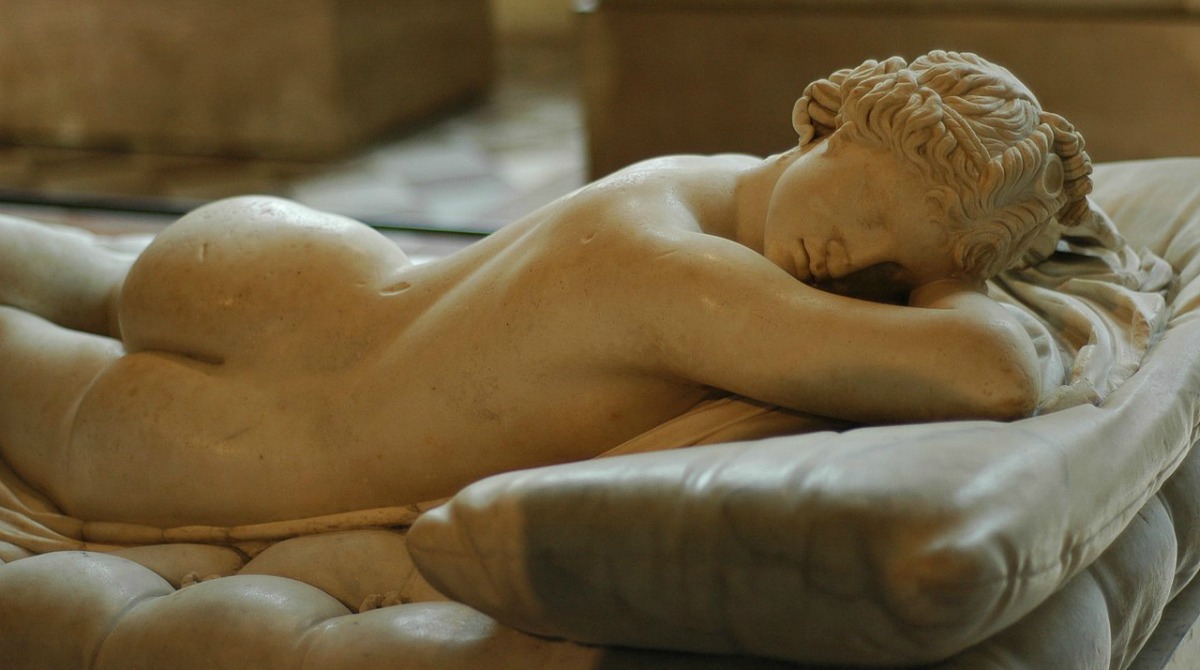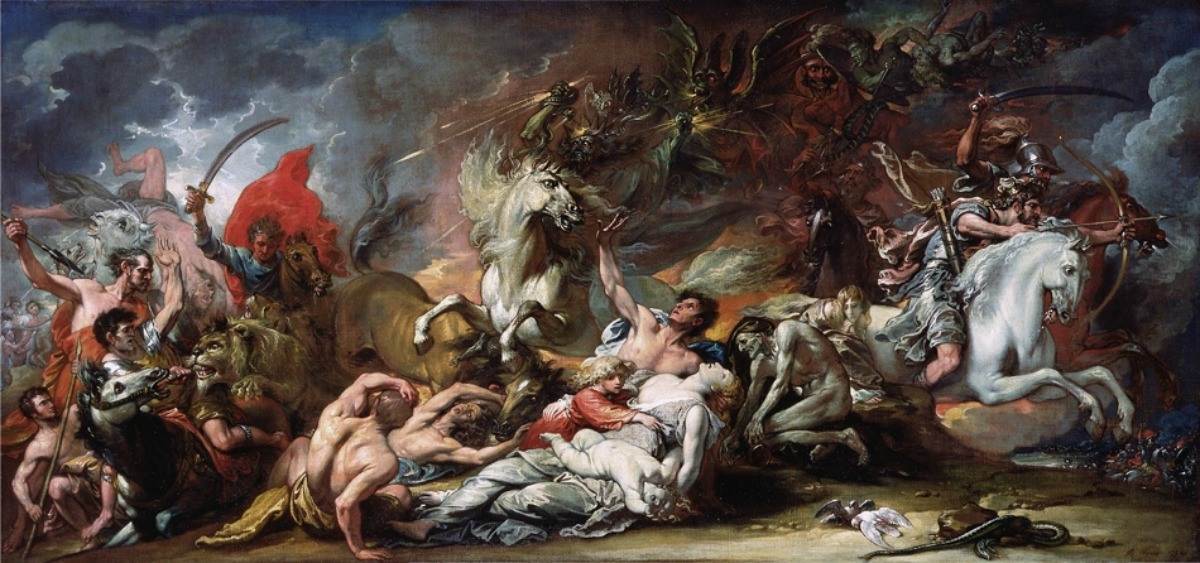How feminists have weaponised androgyny
The culture war now raging over issues such as women’s pay, transgender or inappropriate sexual contact graphically illustrates the phenomenon I identified two decades ago.
I wrote a book called The Sex-Change Society: Feminised Britain and the Neutered Male. In this, I argued that the contract between the sexes had been destroyed, that women’s equality was being confused with identical outcomes, and that masculinity was being run out of town altogether with men being reduced to little more than sperm donors, walking wallets and occasional au-pairs.
You’ll doubtless be amazed to hear that no publisher would touch it. The book was eventually published by a think-tank, the Social Market Foundation, which at that time was aware of the damage being done by the onslaught against bedrock civilisational values – and for which I had written a pamphlet along these lines two years previously. By 1999, however, when The Sex-Change Society was actually published, the think-tank had changed hands and ideological colour and did its best to bury the book. It is now out of print.
In the cause of providing some context for the current uproar, I shall be reproducing here some edited extracts from the book which I hope will be of some interest. I start with passages from the chapter which spelled out the cultural disorder behind today’s explosive transgender issue.
The Myth of Androgyny
“Androgyny not only took feminist thinking a stage further. It arose out of the founding feminist belief that gender roles were socially constructed and that biology had little part to play. The question ‘nature or nurture?’, whether people are born with a fixed and unchangeable character or are moulded and shaped by experience, is one of the most profound and hotly disputed of all human inquiry. As Andrew Heywood has written, most feminists believe that sex differences are minor, and that human nature is androgynous with each sex possessing both male and female traits.
Gender roles thus become artificial constructs. Simone de Beauvoir wrote: ‘Women are made, they are not born’. What makes them, apparently, are society’s stereotypes, nailed firmly into place by the traditional family. According to Kate Millett, boys and girls were conditioned into roles within the family, ‘patriarchy’s chief institution’.
Shulamith Firestone, meanwhile, did think that sex differences arose from biology and reproduction. Nevertheless, pregnancy could be avoided by contraception or abortion, the prospect of artificial reproduction and the transfer of child rearing to social institutions. Both Millett and Firestone agreed that human nature was androgynous, and that gender differences should be abolished. Biology could thus be stymied and patriarchy mocked.
…
The notion that sex differences were socially constructed became a dominant motif in the social sciences, underpinning and reinforcing feminist ideology which in turn influenced yet further social science research… Janet Spence, a professor of psychology at the University of Texas who maintains that divisions of labour along gender lines are universal in human societies, has written that the discipline of psychology was influenced during the 1970s by feminist attacks on ‘unequal’ power divisions between the sexes.
The outcome was an emphasis on androgyny, introduced most influentially by the psychologist Sandra Bem. Androgyny was by no means a neutral idea, wrote Spence, since Bem was a highly ideological feminist. Bem has written that her purpose ‘has always been a feminist one: to help free the human personality from the restrictive prison of sex-role stereotyping and to develop a conception of mental health which is free from culturally imposed definitions of masculinity and femininity’. Accordingly, she suggested people should become androgynes, which meant they could adopt male or female behaviour according to their situation.
To support this idea, Bem developed a ‘self report inventory’ which inconveniently found that men and women scored higher on conventionally recognised attributes than androgynous ones. Undaunted, Bem decided people were capable of adapting, and proposed the abolition of sex role distinctions.
However, wrote Spence, Bem’s definition of androgyny contained a fundamental contradiction, since it presumed the existence of two distinct sex roles which would need to be combined. Not unreasonably, Spence asked therefore: ‘How is one to reconcile hypotheses that state that masculinity and femininity simultaneously form a single dimension and two independent dimensions?’ Bem’s reply seemed to owe more to a vivid imagination than any academic discipline. When androgyny had been absorbed by the culture, she said, concepts of masculinity and femininity would cease to have distinct content and distinctions would ‘blur into invisibility’. ‘The best sex role identity is no sex role identity,’ she wrote. Gender, she maintained, should mean nothing more than being comfortable with one’s body and should have no effect on behaviour or lifestyle.
It is a curious fact that men worry about what they are while women do not. Women know what they are without having to make a song and dance about it; men have to prove what they are all the time, to themselves and to others. Feminism insisted that for women, biology was not destiny. If only men were so lucky. Their problem is that their biology plainly is not their destiny, which really does have to be constructed.
…
Almost everywhere in the world, the sexes have maintained different roles. Breadwinning is an almost universal measure of manhood. Even where women are wage earners, as in Andalusia, the men are still expected to contribute the lion’s share of the family income. George Murdock’s Ethnographic Atlas, published in 1967, found that men contributed much more than women to the family’s primary subsistence in the vast majority of cultures. Where women were also providers, there was a qualitative difference, in that unlike men women’s work didn’t generally involve risk, struggle or danger.
Moreover, human fathers may be unusual in the animal world for their level of paternal care, but even so they rarely play the role of intensive child caretakers. Out of 80 cultures in a world survey of paternal relationships, fathers never or rarely went near their infants in 20 per cent and had a close father-infant relationship in only 4 per cent. Even in those cultures where fathers were close to their infants, like the !Kung San of Africa, fathers spent only 14 per cent of their time dealing with them, which is about the same as active fathers in most industrial societies.
However, despite such evidence, the proponents of androgyny have seized upon anthropological studies of primitive peoples to try to prove that sex roles are plastic and that male and female activities both at home and at work are interchangeable. Ethnographers have described a small number of rudimentary cultures without patriarchy, where the men lead a narcissistic existence, contributing little to the community and leaving everything, including labour, to the women. In their assault on the sexual division of labour, feminists have held out these societies as an ideal of male behaviour. Adrienne Burgess, for example, has celebrated the male Aka pygmies of the African Congo as the ‘stars of paternal involvement’ who do ‘more infant caregiving than fathers in any other known society’. This paradigm of gender symmetry has produced one of the most backward societies on the globe. The male of the Aka tribe is nevertheless to be hailed, apparently, as a shining example of the New Man.
In fact, the study of the Aka pygmies made clear that the mothers were still the principal infant caretakers. In the forest, where men’s and women’s subsistence activities overlapped, the fathers didn’t help with the infants, and despite taking part in the tribe net hunt the mothers remained the main infant caretakers there. Even when the fathers were near their infants in the forest, where they were more available than in the camp, they didn’t hold their infants any more often, and when they went searching for palm wine they became even less available. So the picture was rather more ambiguous.
Undaunted, however, Burgess also hailed the ‘paternal enthusiasms’ of the Trobriand Islanders, observed by Malinowski in 1927, and the Arapesh tribe, observed by Margaret Mead, where fathers were ‘intensely involved throughout pregnancy’ and where the minute by minute care of little children was as congenial to men as to women. In addition, wrote Burgess, the Manus tribe had inspired Mead ‘to question Western assumptions about biological programming in parental behaviour’. Manus women had low status; boys and girls were encouraged to identify with their fathers; and the little boys played with baby dolls Mead offered the children. Burgess concluded that ‘the message from the “natural world” is that anything is possible.’
In fact, neither the Manus nor the Arapesh could be described as a conspicuous advertisement for parental care, nor indeed for a happy and successful adult life. According to Mead, the Manus devalued not just women but sex, which was perceived as a form of excreting. The birth rate was correspondingly very low. Boys remained attached to their fathers but after a few years fathers returned girls to their mothers with whom identification was never as happy. The women didn’t enjoy being women, maybe because they had been looked after by their fathers rather than their mothers, and their lack of self-worth was not unconnected with the fact that they were despised by men.
As for the Arapesh, the extreme passivity of the men meant they engaged very little in warfare, and permitted themselves to be blackmailed, bullied, intimidated and bribed by their more aggressive neighbours. They produced no art and were hopeless hunters. In short, concluded Mead, ‘it is a society that makes it much more difficult to be a male, especially in all those assertive, creative, productive aspects of life on which the superstructure of a civilisation depends.’
For the last fifty years, these ethnographers’ accounts have been misinterpreted and wrenched out of context in the attempt by others to prove that patriarchy was not only not universal but that where it didn’t exist the people lived blissful lives of sexual freedom and interchangeable family roles. Malinowski had described the sexual idyll of the Trobriand Islanders; Margaret Mead had done something similar in Samoa. Mead was later shown to have been misled, but George Murdock reported that premarital sexual licence prevailed in some 70 per cent of 250 societies. Yet those who leapt upon these accounts to further their ideological crusade against the traditional family failed to report the downside to these societies, or to relate their behaviour to a particular cultural context which made comparison with western society utterly inappropriate and misleading. They failed to note, for example, that in some Pacific islands the problem of illegitimate children was solved by infanticide. They also ignored the fact that, in sharp contrast to the intensely sexualised West, the sexual imagination of the Trobriand islanders was said to be relatively ‘very sluggish’.
Obviously, the absence of sexual restraints there would not cause the enormous upheavals that would inevitably follow the collapse of social controls in sexually agitated western societies. In fact, the western sexual liberators had failed to understand that what appeared to be unbridled sexual licence was actually behaviour that operated within a framework of strict regulation. As George Murdock wrote in 1949: ‘Possibly in man’s long history there have been peoples who have failed to subject the sexual impulse to regulation. If so, none has survived, for the social control of sex is today a cultural universal. Our sample societies reveal not a single exception.’
What these studies also actually showed was that in the absence of patriarchy, these tiny societies tended to dwindle and collapse. As George Gilder pointed out, the Arapesh children died for lack of food. The Tchambuli men, abused by women from birth, spent their lives in a futile pursuit of masculinity, with fearful and ineffectual males devoted to various masculine displays. Groups of aggressive and competitive women who were uninterested in motherhood produced ruthless men and a disintegrating society. Men preoccupied with child rearing became incapable of effective sexual behaviour and were paranoid about aggressive women.
Far from pointing the way to an androgynous nirvana, these studies were object lessons in the absolute necessity of patriarchal norms. At the same time, they failed to prove the feminists’ central contention, that societies existed where women ruled. For even where men cared for their infants rather than providing for their families while the women did more work, men still exerted what authority there was. The Iroquois prohibited women from ruling and considered them ‘servants’. The Mbuti pygmies gave authority to the hunters groups of men settled disputes and crisis rituals were reserved for males. And so on.
The distortion of anthropology was nothing new. Indeed, that was precisely how Engels had constructed his theory of patriarchal oppression, the inspiration of modern feminism. Malinowski had previously described how false views of ‘mother-right’ and the importance of the clan had been used to misrepresent the facts of human sexual organisation and undermine the traditional family. Savages, he wrote, had been used as ‘pawns and props’ to paint a false picture. The truth was that both primitive and developed societies showed the same features; mothers tied by physiological bonds to their children, fathers watching over their safety and guiding them through life. Even in matrilineal societies where fathers were mainly absent, they still had to marry if their children were to enjoy full legal status, they remained the guardians of the family in certain matters, still performed economic duties and acted as representatives of their wives on many occasions.
However, anthropologists had previously taken a wrong turning. A number of scholars such as Johann Jacob Bachofen and Lewis Morgan had promulgated the false view that human society had started promiscuous and then passed through many stages including group marriage, polyandry and polygamy before arriving at monogamy. Darwin and others subsequently destroyed these theories. Throughout history, as was made clear, family and marriage had emerged as stable groups consisting of father, mother and their children, united by a contract and surrounded by religious sanctions which made the family into a moral unit.
The evidence of promiscuity was often wrong. Sex was the most powerful instinct of all, but the existence of masculine jealousy, sexual modesty, female coyness and the mechanisms of sexual attraction and courtship had meant that even primitive societies possessed the means of regulating and suppressing sexual instincts to produce the primeval pattern of human pairing. Habits became rules of conduct, so the family became based on the union of man and wife, involving the personal affection springing out of sexual attachment, economic conditions, mutual services and above all the common relationship of both parents to their children.
Marriage, said Malinowski, was therefore an institution based on a complex of social conditions, not on the sexual appropriation which some people had projected onto primitive societies where a few lived in sexual communism. The family based on marriage was ‘the only domestic institution of mankind’ whose function was the procreation, care and training of offspring.
Engels, however, had based his theory of ‘the world historic defeat of the female sex’ on the false theories of Bachofen and Morgan. Engels thus claimed that monogamous marriage was formed in early society as ‘the subjection of one sex by the other, as the proclamation of a conflict between the sexes entirely unknown hitherto in prehistoric times’. Bachofen had said that women had developed the cultures of primitive society and that matriarchy had led society out of barbarism. He had further influenced a wide array of 20th century feminists who became very influential in the US, including Robert Briffault.
Briffault wrote that mother-right was the source of all human organisation, that male influence had been entirely irrelevant in early culture, law, political organisation and economic life, and that magic and religion had been created and dominated by women. ‘Fatherhood’, he ordained, ‘does not exist’. Malinowski described Briffault’s book The Mothers as an ‘encyclopaedia of matrimonial errors’. Even the prominent feminist historian Gerda Lerner has conceded that the theories of Briffault and Bachofen have been disproven and that in most primitive societies men and women were ‘separate but equal’. She concluded: ‘No matriarchal society has ever existed.’
Men and women are equal, but different. Separate sex roles and equity between men and women are not contradictory but complementary concepts. That is why some division of roles within the family has existed throughout all cultures, even though the precise nature of those roles may vary. These roles were not imposed by men upon women but freely adopted by both sexes because they were the most appropriate reflections of the different needs and impulses of women and men in the common project of human pairing whose aim was the successful production and rearing of children. It is that common project which is now under sustained attack, and which has given rise to modern gender feminism and its offshoot, the promotion of androgyny.
Gender feminism demonises and marginalises men so that women can be freed from their obligations to kinship in order that they can realise their individual pleasures. Androgyny is the ultimate expression of individualism. It presupposes that one person alone can achieve human potential; there’s no need for anyone else to be involved. Otherness is superfluous. We can each do otherness ourselves. But while women can and do work outside the home, men cannot so easily turn themselves into biologically programmed carers. Hence the so-called ‘crisis of masculinity’, a crisis invented by those who wish to claim that the distinctive role of fathers is redundant.
Men are thus to be re-engineered into the emotionally literate unemployed (or if they’re really lucky, part-employed), so that women can take their jobs and the state can perform the women’s role—with fathers turned into au pairs. The aim is nothing less than the removal of the distinctive social and cultural role for fathers that has defined civil society at least since Thomas Hobbes recognised it in the sixteenth century, with men moving into what David Blankenhorn has called a ‘post-modern state of nature’. Yet this is not in women’s interests either, and the evidence suggests that the vast majority of mothers know that to be so.
Nevertheless, women and men are being told that the old order has to change. The age of androgyny has arrived.”




